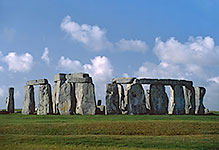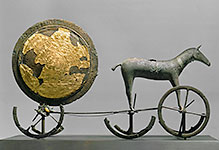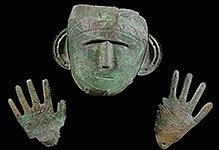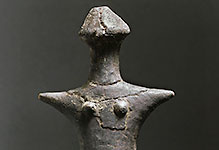
Prehistory
Palaeolithic, Neolithic, Bronze Age and Iron Age.

#01010423
A dying Gaul at the feet of the Goddess Themis. Zeus Altar, erected 180 BCE by E...

#010201 8
Prehistoric cult place on slope of the Buelbueldag. Double stone seat (seat...

#010301 2
Servian fortification wall near the railway station in Rome, Italy,...

#010301 3
Servian fortification wall near the railway station in Rome, Italy,...

#01030145
The bishop's church of Aguntum, once a Celto-Roman templ...

#030101 5
Fragment of the "Hunting Palette", 3.300-3.100 BCE Grauwacke from Abydos, 4...

#030101 6
Knife from Jebel el-Arak,near Abydos.Negade II,3.500 - 3.100 BCE.Silex and hypp...

#03010129
Mudstone cosmetic palette,late pre-dynastic period, around 3100 BCE, from Amra....

#03030140
Cup,Mesopotamian, late Prehistoric period, 3.400 to 3200 BCE.he cup is carved on...

#030302 1
Terracotta head of a ewe, Late Prehistoric period, 3.300-3000 BCE. Sheep played...

#030302 2
Statue of a bearded man, Early Dynastic period, 2.600-2,500 BCE. This broken sta...

#030302 3
Stone mould, Old Babylonian Period from Ninveh, northern Iraq, 18th BCE. The mou...




